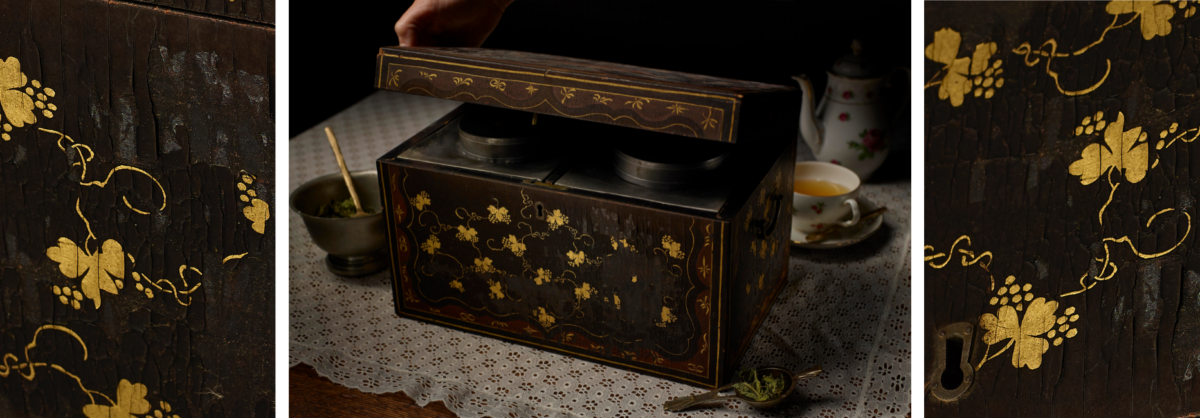The new Seton Shrine Museum, opening September 22nd, 2023, will be the new home for dozens of historically significant artifacts. It is indisputable that Elizabeth Ann Seton grew up and lived in a pivotal moment of American history, and the objects that occupied her world tell not only the story of America’s infancy years, but her own life as well. These objects were passed through many hands throughout the past two hundred years until they arrived here at the Seton Shrine, and we are excited to share with you the stories behind these artifacts.
What is it?
This wooden tea chest is said to have belonged to St. Elizabeth Ann Seton’s father, Dr. Richard Bayley. The chest has a gilt decoration and brass handles with two tin tea boxes inside.
Who was Richard Bayley?
Dr. Richard Bayley (1745 – August 17, 1801) was a prominent New York City physician and the first chief health officer of the city. An expert in yellow fever, he helped discover its epidemiology, improved city sanitation and authored the federal Quarantine Act of 1799.
The 1788 Doctors’ Riot in New York was sparked by fears that his students were secretly removing corpses from graves in order to dissect them. He helped to found the New York Dispensary, which operated in the Greenwich Village neighborhood well into the 20th century. He was the first American surgeon to successfully amputate an arm at the shoulder. By 1783, Bayley had begun performing cataract surgery.
Why is the tea chest significant?
The chest provides a glimpse of life in 18th century America and speaks to Elizabeth’s wealth and status growing up in New York. By the early 18th century, tea had become an important part of English social life in the colonies. As a result, important designers were including boxes for tea storage in their design books.
For many in the monied classes, being waited on hand and foot also meant living with the fear of thievery — be it of the family silver or the coveted tea leaves. There was even concern that leftover tea leaves would be dried and sold as new. “You have also heard, that your maids sometimes dry your leaves and sell them,” read a letter in the May 1794 issue of Anthologia Hibernica. “Your industrious nymph, bent on gain, may get a shilling a pound for such tea.”
Hence the practice of keeping the family’s tea safe in caddies fitted with locks and keys, or in secured in wooden chests where caddies were stored in pairs (one for green tea and one for black).
Most tea was of poor quality, overboiled, and mixed with who-knows-what. Pure, high-quality tea remained a luxury, and elaborate rituals and an armada of specialized instruments were developed for storing, brewing, and serving it, from detailed tea caddies to silver sugar tongs to elaborate hot water urns.
How did this item come to the Shrine?
Many of the items were donated in 1972 by Ferdinand Jevons, the last living descendant of Elizabeth Ann Seton.
Several artifacts, including the tea chest were donated to the sisters in New York upon the death of the saint’s great-grandson and last living descendant, Ferdinand Jevons, of New York.
Interesting fact
A similar tea chest belonging to Alexander Hamilton is on display at the Metropolitan Museum of Art in New York. Hamilton and his wife were acquaintances of Elizabeth. The Hamilton chest made in China with Black Lacquer with gold painting. It contains six tea boxes.
For more information about the National Shrine of Saint Elizabeth Ann Seton, visit www.setonshrine.org.
